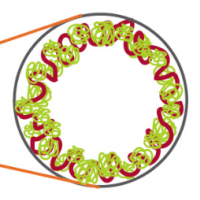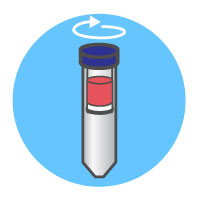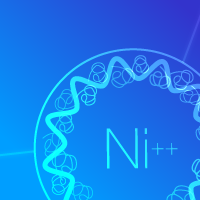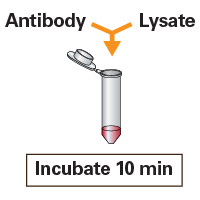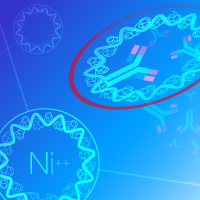FAQs about Capturem technology
There is a constant need for faster, more efficient antibody and protein purification processes at any scale. Capturem membrane technology allows for purification directly from complex matrices, such as cell supernatants, in minutes. This technology also provides highly purified and concentrated antibodies and his-tagged proteins, even from samples containing additives not compatible with other purification technologies.
Find out more about Capturem technology: click on the expandable tabs below to view the answers to our most frequently asked questions.
General questions about Capturem technology
Can you reuse Capturem plates and columns?
Capturem devices are designed for single use and have not been tested for multiple uses.
How many elutions are required to recover most of your bound protein or antibody?
That depends on the specific chemistries involved. We find that his-tagged purification typically requires 1–2 elutions, while streptavidin chemistries (e.g., Ab-Ab capture) require 2–3 elutions.
What is the yield or capacity of Capturem plates and columns?
Refer to the Capturem his-tagged protein purification products page for a table containing this information.
Is it a problem if the column or plate membranes dry out between steps when centrifuging or using vacuum filtration?
We have not seen any problems resulting from membranes drying out between steps, whether we are using centrifugation, vacuum filtration, or positive pressure manifolds. We expect the liquid to be fully removed after a 3-min centrifugation step.
What are the recommended storage conditions for Capturem plates and columns?
All Capturem products can be stored at room temperature.
What sort of clarification procedure is required before loading samples onto Capturem plates and columns?
We recommend pre-clarification by centrifugation. If any sort of clogging occurs, we also recommend filtering with a filter smaller than 1.2 microns (for example, a 0.8-micron filtration unit). Other methods for dealing with viscous samples, such as the use of DNAse I or lysozyme, are discussed in our xTractor Buffer and xTractor Buffer Kit User Manual.
What pH range can Capturem membranes tolerate?
Capturem membranes are highly stable nylon-based membranes that remain stable from pH 1 to pH 13. The pH range we recommend for each Capturem product is based on its particular chemistry, and is specified in its respective Protocol-At-A-Glance.
Questions about specific Capturem kits
Capturem his-tagged purification
How much imidazole do you recommend using in the binding buffer?
Unlike many resin-based protocols, we do not recommend using any imidazole in the binding buffer.
Can you regenerate Capturem membranes with nickel?
We do not recommend regeneration.
Is Capturem his-tagged purification compatible with my protein?
Yes! We have tested Capturem his-tagged purification columns on proteins expressed from bacterial, yeast, insect, and mammalian expression systems, including both secreted and nonsecreted proteins. Our columns should work for any his-tagged protein that is compatible with standard his-tagged purification resins.
Do you sell cobalt- or DYKDDDDK-tag-based Capturem columns?
No, but we do offer cobalt-based TALON resins and columns.
Capturem Streptavidin
Can you biotinylate any enzyme and load it onto a Capturem Streptavidin column or plate for rapid enzymatic reactions?
Yes. Capturem Streptavidin should work for any biotinylated enzyme. You will need to perform a test to verify that biotinylation does not interfere with the activity of the enzyme.
Can you use Capturem Streptavidin with cells?
Capturem membranes have a pore size of about 1.2 µm, so cells will not be able to pass through the membrane. We have tested our membranes with cell lysates, e.g., lysates prepared with our xTractor Buffer, and found that they are compatible with Capturem products.
Can you perform biotin-based immunoprecipitation with Capturem Streptavidin?
Yes. We have tested this with antibody capture, but in principle Capturem Streptavidin should behave similarly to our Capturem IP & Co-IP Kit with any biotinylated capture ligand.
Can Capturem Streptavidin be used for low-input antibody quantitation?
Yes. Although we do not have any data for antibody quantitation using triple quadrupole mass spectrometry (TQMS), an absorbance-based assay was able to detect as little as ~5 ng of target antibody, while Western blot-based detection was able to detect as little as 0.5 ng of target antibody. Note that the efficiency of antibody-antibody capture depends on your antibody pair.
Capturem technology technical notes
Capturem his-tagged overview
Learn about a novel solution for recombinant protein purification from mammalian and bacterial cell lysates.
His-tagged maxiprep kit data
Purify active, secreted his-tagged proteins from cell-culture supernatants in 15 minutes.
His-tagged large volume data
A simple, rapid method for purifying and concentrating his-tagged protein from large sample volumes.
IP and Co-IP data
View data on IPs and Co-IPs performed with the Capturem IP & Co-IP Kit.
Streptavidin data
Learn how Capturem Streptavidin enables rapid purification or enrichment of biotinylated compounds.
Takara Bio USA, Inc.
United States/Canada: +1.800.662.2566 • Asia Pacific: +1.650.919.7300 • Europe: +33.(0)1.3904.6880 • Japan: +81.(0)77.565.6999
FOR RESEARCH USE ONLY. NOT FOR USE IN DIAGNOSTIC PROCEDURES. © 2025 Takara Bio Inc. All Rights Reserved. All trademarks are the property of Takara Bio Inc. or its affiliate(s) in the U.S. and/or other countries or their respective owners. Certain trademarks may not be registered in all jurisdictions. Additional product, intellectual property, and restricted use information is available at takarabio.com.



